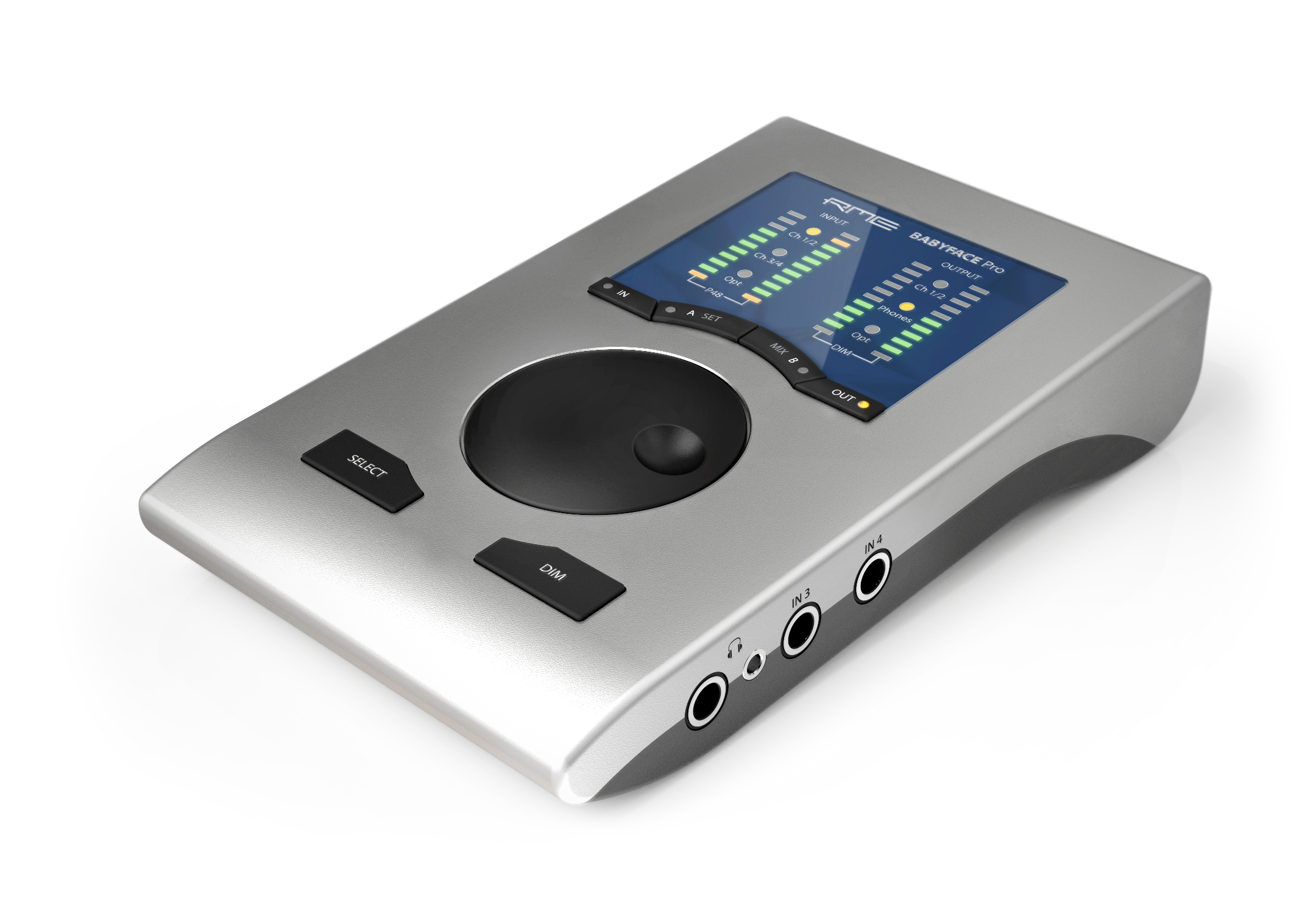RME have launched the latest in their incredibly successful range of quality USB audio interfaces. The new “Babyface Pro” may bear a slight resemblance to it’s older brother, but don’t be fooled! On closer inspection, you’d be forgiven for thinking that this all new interface had a more athletic and forward thinking father.
The newly designed RME Babyface Pro is beautifully sculpted from a single block of aluminium and features specially designed analogue and digital circuits. The main I/O RME incorporates a completely new XLR socket, which integrates seamlessly into the housing and saves space.
The Babyface Pro’s offers two headphone outputs which have completely separate driver stages to perfectly match low and high impedance headphones. This of course guarantees an incredibly clean sound no matter which cans you have draped over your ears.
Two individually switchable digitally controlled preamps are also provided with brand new circuitry featuring gain of up to 70 dB, this means that you will be able to use even the lowest level microphones.
Latest generation low latency AD/DA converters, combined with RME’s unique SteadyClock technology, result in exceptional specifications that will satisfy the most demanding of professionals.
But don’t assume that it’s all about looks and sonics, the user interface is very easy to use and and clearly laid out. Even in stand-alone mode, routing and mixing of inputs to outputs directly on the device opens a whole world of possible applications.
The RME Babyface Pro’s small size is not the only advantage to using it out and about, it will almost never need an external power supply and is stable on USB 3.0 and almost all USB 2.0 ports. You are also given optical TOSLINK I/O which you can use as an ADAT port with SMUX support or SPDIF for sessions (up to 192 kHz).
The Babyface Pro comes with RME’s versatile Totalmix FX software making it the perfect choice for live or in the studio.




















